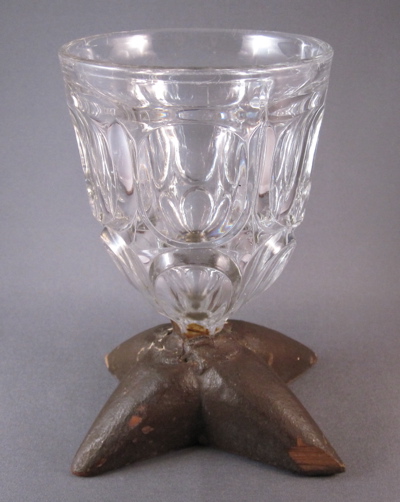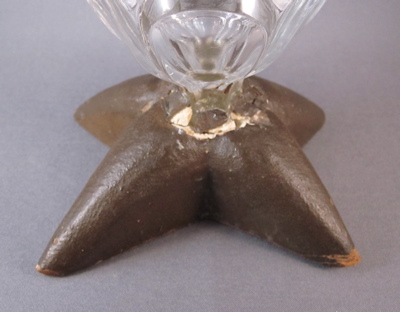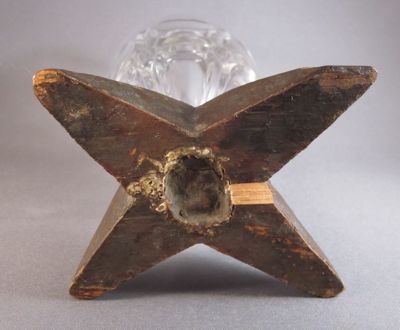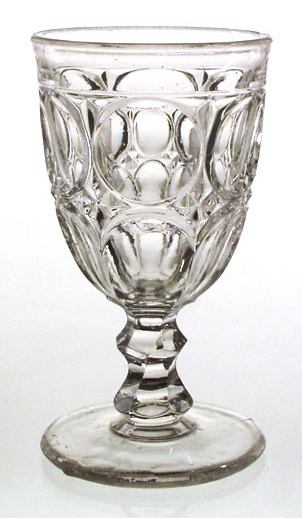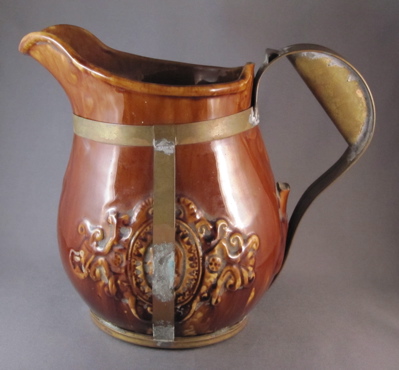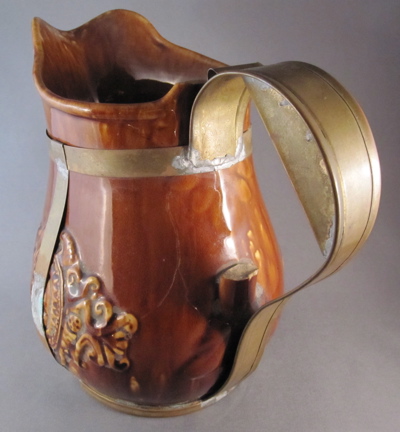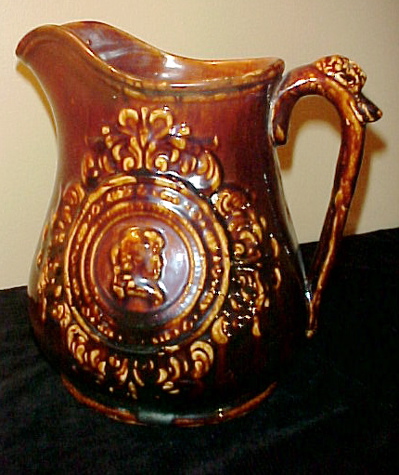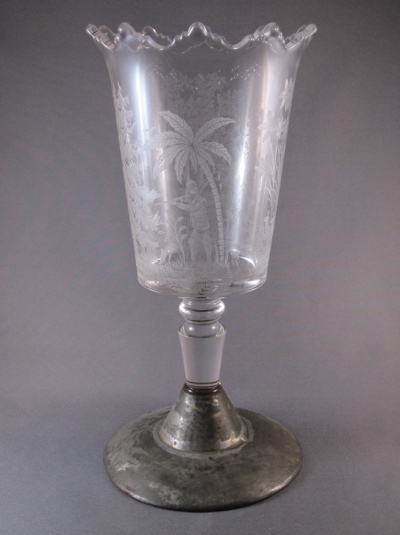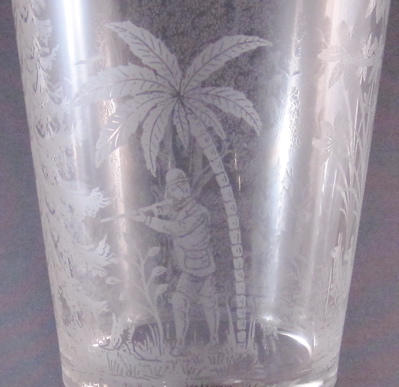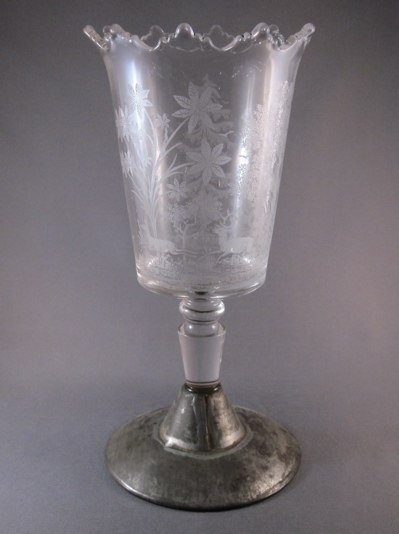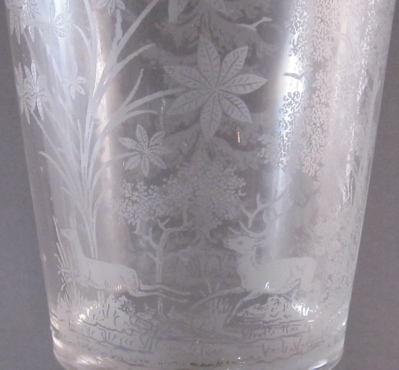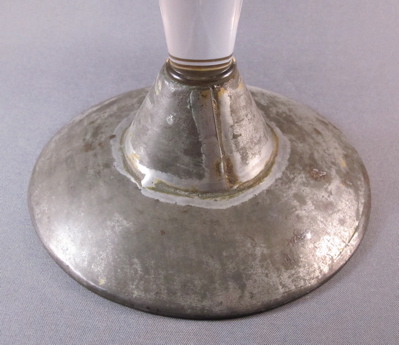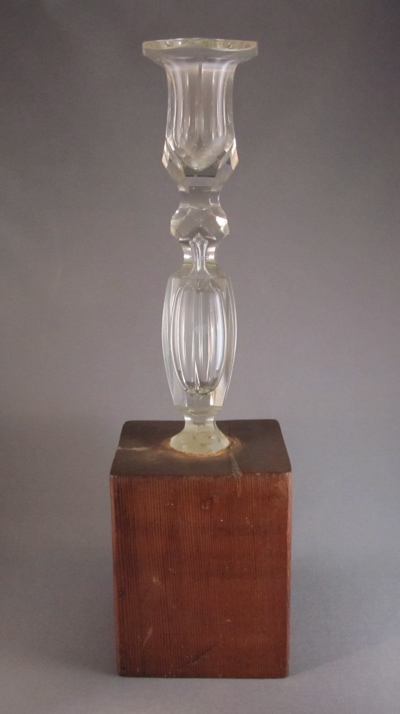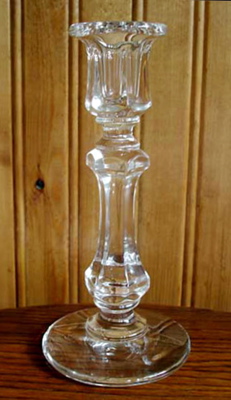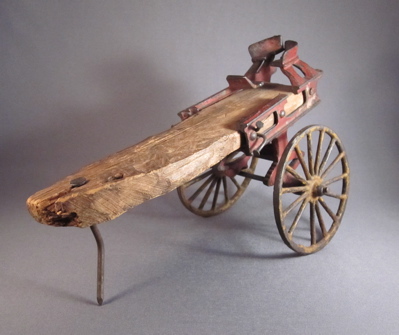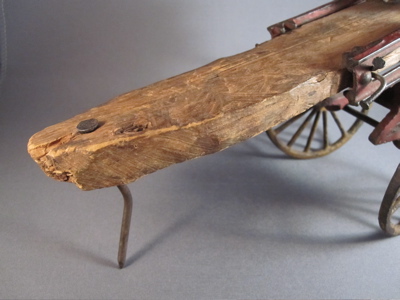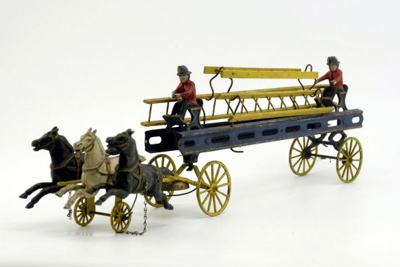A geometric pattern flint glass goblet in the “Excelsior” pattern, measures 5-3/4″ high and was made by McKee Bros. of Pittsburgh, PA.
The original glass base was replaced with this most unusual 4-prong painted wood base, one of the more whimsical replacement bases I have ever seen.
The broken stem of the goblet can be seen on the underside.
Below is an intact “Excelsior” goblet with an offset-flute stem base. This is what my goblet would have looked like before its replaced inventive repair base was added .
Photo courtesy of the University of Wisconsin
